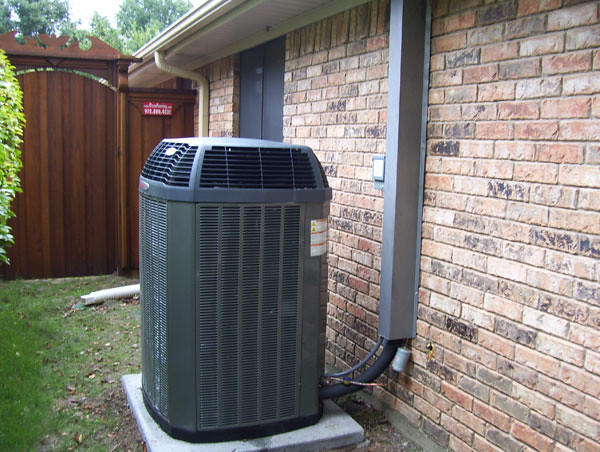When it comes to choosing the right air conditioning system for your home, the decision between Trane and Lennox can be a challenging one. Both brands are renowned for their quality, efficiency, and reliability, but there are distinct differences that can impact your choice. In this comprehensive guide, we’ll delve into the key factors to consider, including energy efficiency, warranty coverage, and cost, to help you determine which brand is the better fit for your needs.
Energy Efficiency: Trane vs. Lennox
Energy efficiency is a crucial consideration when selecting an air conditioning unit, as it directly impacts your utility bills and environmental footprint. Both Trane and Lennox offer a range of energy-efficient models, but their specific capabilities vary.
Lennox is widely recognized for its commitment to energy efficiency, with a SEER (Seasonal Energy Efficiency Ratio) range of 14.5 to 22 across its product line. This means that Lennox units can convert a higher percentage of the energy they consume into cooling power, resulting in lower energy bills for homeowners.
On the other hand, Trane’s lowest-tier models have a SEER range of 14.5 to 22, which is on par with Lennox’s offerings. However, Trane also manufactures high-efficiency models that can reach SEER ratings of up to 26, providing an even greater level of energy savings.
To maximize energy efficiency, it’s essential to carefully evaluate the specific SEER ratings of the Trane and Lennox models you’re considering, as well as their compatibility with your home’s size and cooling needs.
Warranty Coverage: Trane vs. Lennox
 Image source: Flickr by Jackie Bese
Image source: Flickr by Jackie Bese
The warranty coverage provided by Trane and Lennox is another crucial factor to consider when making your purchase decision.
Trane offers a comprehensive 10-year warranty on the compressor, parts, and labor for their XR16 model. This extended warranty coverage provides peace of mind and protects your investment against potential issues that may arise during the unit’s lifespan.
In comparison, Lennox offers a 10-year warranty on parts and a 3-year warranty on labor for their EL16XC1 model. While the parts warranty is on par with Trane’s, the shorter labor warranty may be a consideration for some homeowners.
It’s important to note that warranty coverage can vary depending on the specific model and may be subject to certain conditions or exclusions. Be sure to review the warranty details carefully for the Trane and Lennox units you’re evaluating to ensure you understand the coverage and any limitations.
Cost Considerations: Trane vs. Lennox
The cost of the air conditioning unit itself is an important factor, but it’s not the only consideration when it comes to the overall investment. Installation costs, energy efficiency, and long-term operating expenses can also significantly impact the total cost of ownership.
Based on the example provided, the Trane XR16 model has a cost of $5,200, while the Lennox EL16XC1 model is priced at $4,400. However, these prices can vary depending on the specific model, features, and your local market conditions.
When comparing the cost, it’s essential to consider the energy efficiency of the units, as more efficient models may have a higher upfront cost but can result in lower utility bills over time. Additionally, the installation costs, which can vary based on the complexity of the project and the expertise of the HVAC contractor, should be factored into the overall cost analysis.
Other Factors: Trane vs. Lennox
Beyond energy efficiency, warranty, and cost, there are a few other factors to consider when comparing Trane and Lennox air conditioning systems.
Lennox offers solar-compatible units that can be integrated with solar power systems without the need for specialized hardware. This can be a significant advantage for homeowners who are looking to reduce their carbon footprint and energy costs.
Another key difference is the coil material used in the units. Lennox air conditioners feature copper coils, which can be repaired on-site with minimal equipment. In contrast, Trane units typically use aluminum coils, which cannot be repaired and must be replaced if damaged.
Conclusion
When it comes to choosing between Trane and Lennox air conditioning systems, there is no clear-cut “better” option. Both brands offer high-quality, reliable, and energy-efficient solutions, but the best choice for your home will depend on your specific needs, budget, and preferences.
To make an informed decision, it’s essential to carefully evaluate the energy efficiency, warranty coverage, cost, and other factors that are most important to you. Consulting with a local HVAC expert can also provide valuable insights and help you determine the optimal air conditioning system for your home.
Remember, the decision-making process should be tailored to your unique requirements, ensuring that you select the air conditioning system that will provide the best long-term performance, energy savings, and overall satisfaction.
References:
- Freezing Mechanical – Trane vs. Lennox: Which AC Brand is Better?
- Forbes – Lennox vs. Trane vs. Carrier: Which HVAC Brand is Best?
- Day & Night Air – Trane vs. Lennox: Which is the Better Air Conditioner?
- RedFlagDeals – Deciding Between Air Condition Units: Trane vs. Lennox
- HVAC-Talk – Trane VS Lennox, which is better?
- SMO Energy – Lennox vs. Carrier vs. Trane: Which HVAC Brand is Best?
